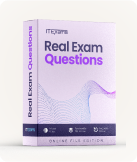ACI 3I0-012 - ACI Dealing Certificate Exam
Page: 1 / 148
Total 740 questions
Question #1 (Topic: Topic 1)
A put option is ‘out-of-the-money’ if:
A. Its strike price is higher than the current market price of the underlying commodity
B. If the current market price of the underlying commodity is higher than the strike price of the option
C. Its strike price is equal to the current market price of the underlying commodity
D. If the current market price of the underlying commodity is lower than the strike price of the option
Answer: B
Question #2 (Topic: Topic 1)
A CD with a face value of EUR 10,000,000.00 and a coupon of 3% was issued at par for
182 days and is now trading at 3.10% with 120 days remaining to maturity. What has been
the capital gain or loss since issue?
182 days and is now trading at 3.10% with 120 days remaining to maturity. What has been
the capital gain or loss since issue?
A. -EUR 52,161.00
B. -t-EUR 47,839.00
C. -EUR 3,827.67
D. Nil
Answer: C
Question #3 (Topic: Topic 1)
A “time option” is an outright forward FX transaction where the customer:
A. has the option to fulfill the outright forward or not at maturity
B. may freely choose the maturity, given a 24-hour notice to the bank
C. can choose any maturity within a previously fixed period
D. may decide to deal at the regular maturity or on either the business day before or after
Answer: C
Question #4 (Topic: Topic 1)
The Market Segmentation hypothesis suggests that the yield curve bends at some point
along its length because:
along its length because:
A. Investors have less appetite for longer-term investments
B. Borrowers prefer to borrow long-term but lenders prefer to lend short-term
C. Different types of institution tend to specialize in different maturity ranges
D. The risk premium becomes significant only at longer maturities
Answer: C
Question #5 (Topic: Topic 1)
Which statement about modern matched-maturity transfer pricing in banks is correct?
A. It is now a widely accepted standard that banks should use a single representative transfer price across the entire maturity spectrum.
B. Modern matched-maturity pricing systems include an additional liquidity surcharge that is specifically applied to more liquid short maturities.
C. Matched-maturity transfer prices should represent a weighted average cost of capital that incorporates the cost of equity into the cost of borrowed funds.
D. Modern matched-maturity systems differentiate transfer prices by the maturity of the commitment and also apply a marginal funding cost perspective.
Answer: D
